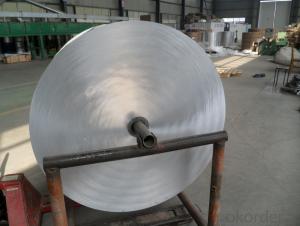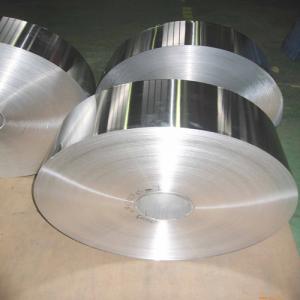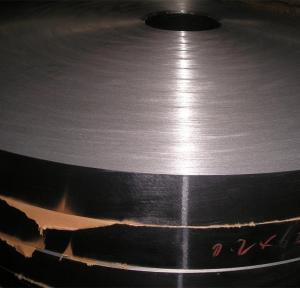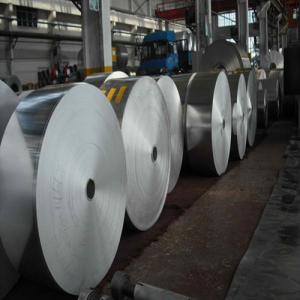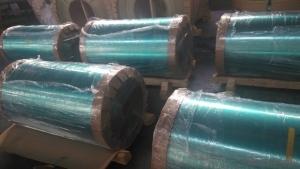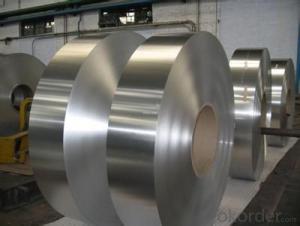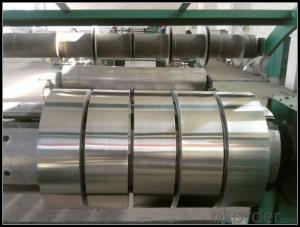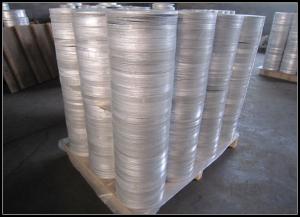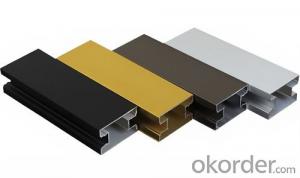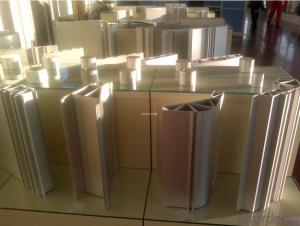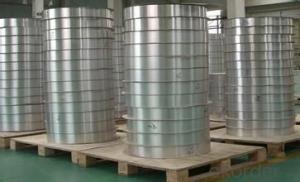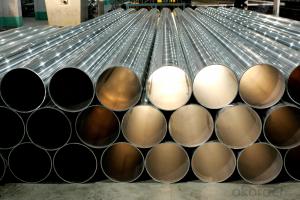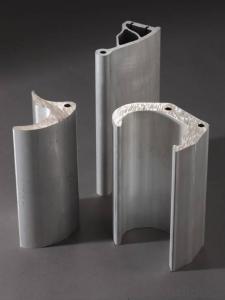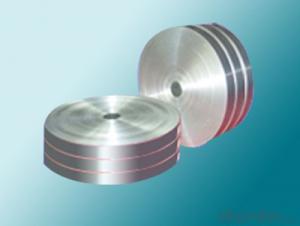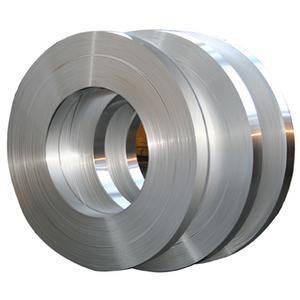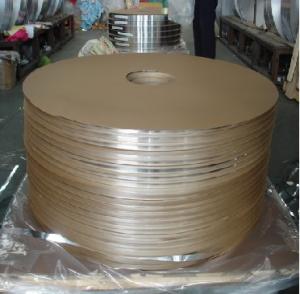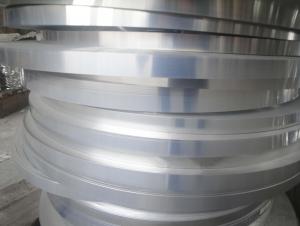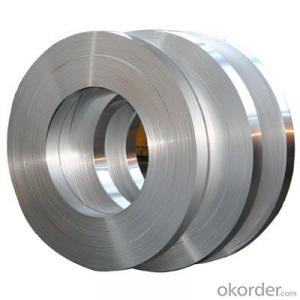Strips of Aluminum for Aluminum Plastic Pipe
- Loading Port:
- Shanghai
- Payment Terms:
- TT or LC
- Min Order Qty:
- -
- Supply Capability:
- 2000 Tons kg/month
OKorder Service Pledge
OKorder Financial Service
You Might Also Like
1.Description
Aluminum strip is widely used in industry, such as packaging & building industry. Because the good anti heat and anti wet specification. it's very good for Pipe system materials. Normally it's outside bright and inside matt.
2.Specification and Application
Specification
| Alloy | 1050/1060/8011 |
| Temper | Soft |
| Process | DC / CC |
| Thickness | 0.2~0.5mm |
| Width | As required |
| Core ID | As required |
Property
| Tensile strength | ≥100Mpa |
| Elongation | ≥20% |
| Tolerance of size | As GB Standard |
3. Advantages
We've been specialized in aluminium for more than ten years, we know this product very well, and we have good finacial support from government. And also flexible payment term and fast delivery.
4. Pictures
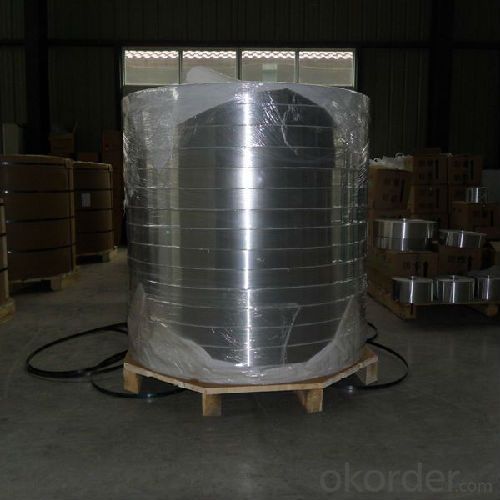
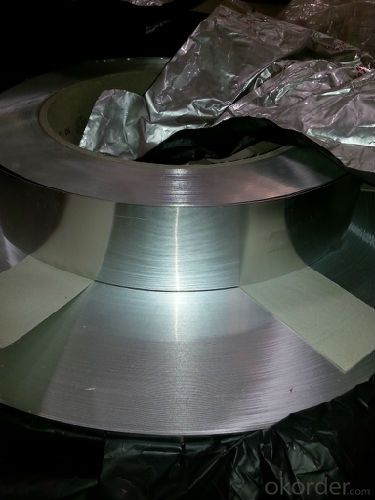
5. FAQ
1) What is your delivery time?
Our regular production time is over 30 days, It depends on the order quantity also.
2) What is your payment term?
We accept T/T, LC at sight, Usance LC 30, 60, 90, 120, 180 DAYS.
3) What is your price structure?
Our price is based on Shanghai Metal Price(SMM), not LME, but we could offer LME+ Conversion for your reference.
4) What is your minimum order quantity?
3tons per size.
- Q: What types of aluminum strips are more appropriate for industrial purposes?
- <p>Yes, there are specific types of aluminum strips that are more suitable for industrial applications. These include 1100 series aluminum strips, known for their high purity and excellent corrosion resistance. 3003 series strips are also popular for their good formability and weldability, making them ideal for applications like chemical equipment and aircraft parts. Additionally, 5052 series strips are valued for their strength and resistance to marine environments, often used in shipbuilding and offshore structures. Each type is chosen based on the specific needs of the industrial application, such as strength, malleability, and environmental resistance.</p>
- Q: Is it possible to use aluminum strips as a material for insulating a building?
- <p>Aluminum strips are not typically used for building insulation. Insulation materials are designed to resist heat flow, and aluminum is a good conductor of heat, which means it would not effectively insulate a building. Common insulation materials include fiberglass, cellulose, and foam, which are poor conductors of heat and can effectively reduce heat transfer. Aluminum strips might be used in construction for other purposes, such as reinforcement or as part of a vapor barrier, but not for their insulating properties.</p>
- Q: Aluminum band treble sounds good?
- The impedance of the 1. aluminum band tweeter is almost constant, so there is an excellent frequency response curve in the high frequency band that does not begin to decay until near 40khz.2., compared to ordinary metal treble, sensitivity is higher, the aluminum ribbon tweeter sensitivity is almost above 90db.
- Q: Is it possible to utilize aluminum strips in the food packaging industry?
- <p>Yes, aluminum strips are commonly used in food packaging. They are valued for their excellent barrier properties against light, moisture, and gases, which help to preserve the freshness and quality of food. Aluminum's malleability also makes it easy to form into various shapes and sizes for different packaging needs. Additionally, aluminum is recyclable, contributing to sustainability efforts in the food industry.</p>
- Q: This question asks about the uses of aluminum strips within the construction industry.
- <p>Aluminum strips are widely used in construction due to their strength, durability, and resistance to corrosion. They are commonly used in the manufacturing of window and door frames, as they are lightweight and provide excellent thermal insulation. Aluminum strips are also used in the construction of scaffolding, roofing, and cladding systems due to their high strength-to-weight ratio and ease of installation. Additionally, they are employed in electrical wiring as conduits and in the framing of structural components due to their non-magnetic and non-sparking properties, making them safe for use around electrical equipment.</p>
- Q: This question asks about potential dangers associated with using aluminum strips in a residential setting.
- <p>Using aluminum strips in a home can pose several safety issues. Firstly, aluminum is a good conductor of electricity, so if it comes into contact with live electrical wires, it can cause short circuits or even electrocution. Secondly, aluminum strips can be sharp and may cause cuts or injuries if handled improperly. Additionally, aluminum dust can be harmful if inhaled, potentially causing respiratory issues. Lastly, in the event of a fire, aluminum can melt and release toxic fumes, posing a significant health risk. It's crucial to handle aluminum strips with care and ensure they are used in a safe manner, away from electrical sources and in a well-ventilated area.</p>
- Q: What is the standard thickness for aluminum strip roofing materials?
- <p>The recommended thickness for aluminum strip roofing varies depending on the specific application and local building codes. Generally, aluminum strip roofing is available in thicknesses ranging from 0.018 to 0.032 inches (0.46 to 0.81 mm). For residential applications, a thickness of 0.024 to 0.028 inches (0.61 to 0.71 mm) is commonly used, while commercial buildings might require a thicker strip, around 0.032 inches (0.81 mm) for added durability and longevity. Always consult with a roofing professional or follow local building codes to determine the appropriate thickness for your specific project.</p>
- Q: Is it possible to use aluminum strips for decking purposes or for a neighbor's house?
- <p>Yes, you can use aluminum strips for your deck or your neighbor's house, provided it is for decorative or structural purposes approved by local building codes. Aluminum is known for its durability, resistance to corrosion, and low maintenance requirements, making it a popular choice for outdoor applications like decks. However, it's important to check with local regulations and consult with a professional to ensure the proper installation and use of aluminum strips to avoid any safety or legal issues.</p>
- Q: Is it possible to use aluminum strips as a material for exterior siding on a building?
- <p>Yes, aluminum strips can be used for siding. They are known for their durability, resistance to corrosion, and low maintenance requirements. Aluminum siding is lightweight, easy to install, and comes in various colors and styles, making it a popular choice for residential and commercial buildings. It also has good resistance to harsh weather conditions and does not rot or warp, which are common issues with wood siding.</p>
- Q: Is it possible to install aluminum siding on a historic building without compromising its aesthetic or structural integrity?
- <p>Using aluminum siding on a historic building can be done without damaging its appearance or structure if done correctly. It's crucial to ensure that the siding is installed in a manner that respects the building's historical integrity. This often means using siding that closely matches the original materials in terms of color and texture, and installing it in a way that doesn't alter the building's structural elements. Consulting with historic preservation experts and adhering to local preservation guidelines is essential to maintain the building's historic character while providing the benefits of modern siding materials.</p>
Send your message to us
Strips of Aluminum for Aluminum Plastic Pipe
- Loading Port:
- Shanghai
- Payment Terms:
- TT or LC
- Min Order Qty:
- -
- Supply Capability:
- 2000 Tons kg/month
OKorder Service Pledge
OKorder Financial Service
Similar products
Hot products
Hot Searches
Related keywords
